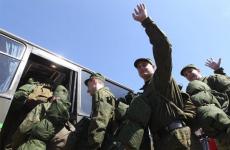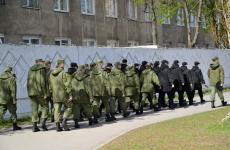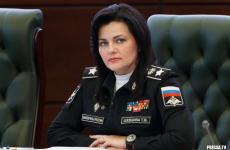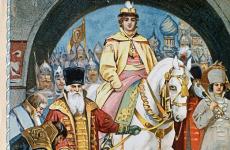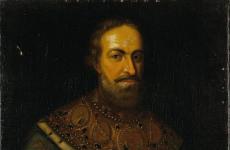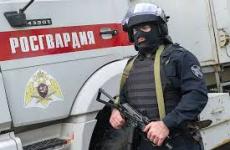Node of productive activity. Preparation and conduct of directly educational productive activities
MBDOU " Kindergarten combined type No. 68"
Engels municipal district of the Saratov region
Abstract directly educational activities
productive activity "Drawing"
Subject:" Snowfall"
Group: older
Educator Kuznetsova E.P.
Engels
Approximate main educational program: "School 2100"
Comprehensive program: "Kindergarten - 2100"
Age group: older
Subject direct educational activity: "Snowfall"
Priority educational area: productive area
Target: create conditions for identifying and testing children's ideas about the ability to compose a fairy tale on the proposed topic and depict it on paper, conveying the features of the fairy tale genre.
Tasks: contribute to the accumulation of ideas about the selection of synonyms and antonyms, definitions for given words. To develop the artistic and creative abilities of children, free communication with adults and children. Raise interest in the phenomena of inanimate nature.
Activities: playful, productive, labor, communicative.
Forms of implementation of children's activities: turning children into storytellers and artists, a game.
Equipment: winter landscapes on slides; toy "White cat" and "Snowflake"; sheets of dark blue paper, white gouache, brushes of 2 sizes (for each child).
Previous work: viewing illustrations of snowfall, observing on a walk, reading poems about winter, solving riddles about winter natural phenomena.
GCD progress.
Children go to the group under calm music.
IN.: Guys, listen. Can't you hear anything? Who was walking so quietly outside the window?
Who came so quietly - quietly?
Well, of course, not an elephant,
And of course the hippo
I couldn't get through this quietly.
And there is silence everywhere.
It means, it means:
Quieter than all came winter.
IN.: So winter has come to us. You have probably already guessed that today we will talk about winter. Guys, you know that every word has words - relatives. There will be a lot of snow this winter. Cheer up the words - relatives to the word "snow".
D.: Snowball, snowflake, snowy, snowman, snowdrop.
IN.: Guys, think about what you can say "winter"?
D.: Moon, garden, plot ...
IN.: Come up with definitions for the word winter. What is she?
D.: Cold, snowy, frosty, cheerful, blizzard.
IN.: Well done! That's how many good and beautiful words we remembered!
Knock on the door
IN.: Someone came to visit us. Who is this? This winter has sent us its magic snowflake. Now this kind sorceress will touch each of you, and you will turn into great storytellers! Let's please our guest with a winter fairy tale. Oh, guys, do you hear who's purring at the window? Why, it's a snow-white cat. Now we are going to write a fairy tale. And it will be called "Snowflake and the Cat"
“There was a cat. His name was…….. He was very fond of walking, but the hostess rarely let him out in the fall. Why do you think? (children's answers). But here came the long-awaited, snow-white ....... The cat came out onto the porch, just lay down, when suddenly something fell on his nose. The cat looked up and saw a shiny ... ... ". And what happened next (children tell their endings of the tale).
IN.: And now the snowflake will touch you again and turn children into artists.
(the teacher touches each child with a snowflake)
I want to suggest drawing a snowfall. How many of you know what it is?
D.: This is when it snows a lot, snow falls from the sky, ...
IN.: Come to the tables and pay attention to what color I have prepared sheets for you to draw. And why?
D.: Dark blue, because if you paint snow with white paints on white paper, it will be hard to see.
IN.: Right. Today we will draw an evening snowfall. Look how I drew.
(showing the teacher his drawing, examining)
Now close all your eyes and imagine your snowfall
(music plays)
You will now begin your work. And in order to make the drawing more beautiful, let's stretch our fingers.
Finger game.
We went for a walk in the yard
One two three four five.
(bend fingers one at a time)
We came to the yard for a walk,
They made a snow woman.
(imitate the modeling of lumps)
The birds were fed crumbs.
(crush bread)
Then we rode down the hill,
(index finger run from top to bottom)
And also rolled in the snow.
(palms on the table one side and the other)
Everyone came home in the snow.
(shake off)
We ate soup and went to bed.
IN.: Now you can start your work.
(children do their work)
IN.: Guys, the magic of the snowflake is over and we have become ordinary guys. Let's look at what snowfalls we got. Who do you think did the best job? (children expressing their opinion about the work of comrades)
What did you like about the transformation today? (....)
What new did you learn today? (…)
At the end of the immediate educational area, together with the children, we organize an exhibition of drawings, comparing them with the snowfall depicted on the slides.
Valentina Biryukova
Region Integration:
Artistic creativity, knowledge, communication, socialization, physical culture, music, reading fiction.
Activities:
Productive, cognitive research, musical, reading, motor.
Target:
To teach children to depict a picture of early spring (melting snow, snowdrops, streams). Continue to learn to think over the composition of the picture (close - far). Encourage children with the means of expression available to them, experimenting with the material (foam rubber, cotton buds, convey the beauty of nature in spring in the drawing. Strengthen the ability to use a palette.
To form in children an interested attitude towards the common product of joint activity. To teach children to negotiate (plan work) and evaluate their work in terms of composition and color.
To develop in children coordination of movements, the ability to come up with movements to the melody.
Purposefully educate emotional responsiveness to nature, using the artistic word and music.
Vocabulary activation: Landscape, horizon, collaborator, palette.
Preliminary work:
Watching the seasonal changes in early spring while walking. Examination of reproductions of paintings by I. Levitan "March", "Spring. Big water" and A. Savrasov "Rooks have arrived". Situational conversation on the topic "landscape". Reading poems about spring. Reading the stories of G. Skrebitsky "Hello Spring", "Birch Grove". Games - fun with paints (mixing colors).
Material:
Magpie (theatrical doll); design "forest clearing" and a path of "thawed patches"; unfinished drawing (to show drawing techniques, easels. audio recording "Voices of nature. Spring." Children have sheets blue color A-3 (one for two, gouache, three multi-colored chips; for each - a palette, brushes, foam rubber inserted into the cap from a felt-tip pen, cotton swabs, napkins, cups of water.
I part Introductory conversation and setting a learning task.
Educator: Guys, what time of year is it? Spring early or late? Today we will draw a spring landscape. What is a landscape? (If the children find it difficult to answer, the teacher reads a poem by G. Gladkov)
"If you see in the picture
The river is drawn
Or spruce and white frost,
Or a garden and clouds
Or a snowfield
Or a field and a hut -
Be sure to picture
It's called landscape. "
game situation.
Educator: I want to invite you to an unusual walk in a forest clearing. But we can only go through the thawed patches, be careful. (children walk the path to "Sounds of Nature in Spring") Well, here we are in a forest clearing. Did you feel the fresh spring breeze? Let's take a deep breath of fresh air and exhale (breathing exercise).
"Look around. The snow has not yet fallen from the earth, and spring is already asking for the soul. The earth is cold, mud with snow, but how cheerful, affectionate, friendly all around! The air is so clear and transparent, the sun is shining brightly. The trees are bare, but they already live , breathe. Yes, everything is good in this happy time, if you love nature. "
(magpie appears)

Magpie: Who came to us in the forest, breaks our silence? (children's answers)
Educator: Magpie, we don't make noise at all. Everyone knows that you should not disturb the peace of the forest dwellers. We admire nature, we want to draw a spring landscape.
Magpie: Also me artists! We didn't even bring brushes with us! Draw with what?
Demonstration of work methods.
Educator:(turning to the magpie) And real artists can draw not only with brushes. Children, what else can you draw? (children's answers) Here we have foam rubber, Alyosha, try to print a tree. (showing the reception by a child) And if you put white prints on these green stalks with a cotton swab, then we will see. (snowdrops)
Magpie: Haha, you're wrong! The tree is very tiny, but it does not happen. And the snow is white, like in winter.
Educator: There is no error here. Guys, explain to the magpie why there is such a tree on the horizon. (children's answers) And snow can easily be made darker. Gleb, show me how to get grey colour. (work with palette)
Magpie: Yes, Dunno and Tube were here in the winter, they painted a landscape together. So they got two whole suns in the picture!
Educator: Children, what Dunno and Tube should have done before starting to draw (children's answers) That's right, it was necessary to agree. And our children are friendly and will be able to agree on who will draw the sun. Guys, choose a co-author for yourself, negotiate and get to work.
Magpie: Draw, draw, and I flew about my forest affairs. Goodbye.
Part II Children's work. Pay attention to the location of the image on the sheet, if necessary - help to work with the palette.

The children are finishing their drawing.

Part III Analysis of the lesson.
Educator: Guys, before we put our work on the exhibition, let's see how we coped with the work.
The red chip is taken by those artists who have one sun in the picture. Green - who has small trees on the horizon. Blue - where the snow is darkened (gray). Artists who turned out to have three chips - well done worked together. But those artists who do not have all the chips are also great. This means that you have noticed your inaccuracies and correct them.
(The teacher reads I. Tilicheev's poem "Spring" and invites the children to the exhibition.)
"Spring is coming to us
With quick steps
And the snowdrifts melt under her feet
Black thawed patches
visible in the fields.
You can see very warm feet in spring. "
(The exhibition is held in a free form. If there is time, the teacher activates the discussion of children with questions.)
What genre are the paintings? Do you think the authors of this picture managed to agree? What mood does this landscape evoke? etc. Beautiful spring landscapes turned out. You have all worked very hard. Our exhibition is now closed. Goodbye.

Synopsis of GCD on productive activities on the topic "Space"
Theme: Space.
Type of GCD: drawing
Integratable educational areas:"Cognition", "Communication", "Socialization".
Target: arouse interest in outer space; to expand children's ideas about the profession of a pilot-cosmonaut, to cultivate respect for the profession.
Tasks:
Educational.Arouse children's interest in space. To acquaint children with the constellations, with the structure of the solar system. To consolidate the knowledge of children about the sun, planets and space objects.
Developing. The development of imagination, memory, coherent speech, fine motor skills, the development of a sense of composition. To enrich the vocabulary of children with the names of planets, space objects, to develop the ability to solve riddles about the planets. Teach children to draw parts of the solar system. Improve technical skills.
Educational. Creating in children a sense of success, erudition in the field of space, readiness to apply their knowledge, interest in the mysteries of space.
Benefits: Demo material. Illustrations about space, solar system; painting by A.K. Sokolov "On the Moon"; poem by V. Shipunova "On a distant planet ..."; rhyme - memory "Planets of the solar system".
Handout: Tinted paper, gouache, brush, glass of water, toothbrush, foam rubber.
Vocabulary work:Conversations with children on the topic: “Space and Man”, “Planets of the Solar System”, memorizing poems about space.
Lesson progress:
Children stand near the teacher and look at the pictures.
Educator: Guys, we were watching the sky on a walk. How do you remember it? (blue, bright, sunny, gray)
That's right, guys, the sky is bright, blue - on a sunny day, gray - on a cloudy day, orange - pink at sunset.
Guys, do you like to look at the sky at night? What can you see in the sky? How many stars are in the sky? (uncountable).
A cloudless clear evening, the sky above our head is strewn with many stars. They look like small sparkling dots and are located far from the Earth. In fact, the stars are very big. And very beautiful.
- Before man flew into space, there were animals. The first "cosmonauts" - scouts were mice, rabbits, insects and even microbes. And then two dogs went into space - Belka and Strelka. They spent only one day in space and successfully landed on Earth.
- On April 12, our country celebrates Cosmonautics Day. 50 years have passed since the first manned flight into space. This is a holiday of astronauts and people who are involved in the creation of space rockets.
- After a successful flight into space of animals, the road to the stars became open to man. After 8 months on the same spaceship, on which the dogs Belka and Strelka flew, a man also went into space.
- On April 12, 1961 at 06:07, the Vostok launch vehicle was launched from the Baikonur Cosmodrome. The ship was piloted by Soviet cosmonaut Yuri Alekseevich Gagarin.
Who are astronauts?
What do you think an astronaut should be like? (healthy, strong, knowledgeable, hardworking, courageous, hardy, etc.).
- Our planet Earth is located in the boundless outer space. It has many other planets, billions of stars, colossal masses of small stones, dust, gases. And all this is called the Universe.
- Let's fantasize, imagine that you and I have risen so high that the Earth has turned into a blue ball below. What will the sky look like now? (the color has changed, it has become brighter, the races have become larger and more colorful, etc.)
- What you are talking about is no longer the sky, scientists call it outer space. Although it is airless, it is filled with stars, planets, comets. Particularly distant stars appear to be dust particles; they form nebulae and the Milky Way (illustration).
- This is our galaxy - it is called the Milky Way. Part of the Milky Way is our solar system, which consists of 8 planets. They all revolve around the sun (illustration showing the solar system). The teacher asks the children to name each planet.
Reading a poem by V. Shipunova "On a distant planet ...".
On a distant, amazing planet
(We won't fly in ten years)
The emerald sun shines brightly
And the orange bear lives.
On silk lilac grass
Calmly wandering pink deer -
Pearl horns on the head
A shadow tramples with a silver hoof.
Guys, what do you think is unusual on this amazing planet? What secret is hidden in it? (emerald sun, orange bear, lilac grass, pink deer).
And who else can live on an amazing planet? (lunatics). Let's turn into sleepwalkers and dance.
Look, children, what ours looks like solar system. Which planet is closest to the Sun? (Mercury). This planet resembles a mountainous country. On its surface there are many craters from collisions with meteorites. Humans cannot fly to Mercury as it is very close to the Sun. The surface of the planet is being studied by automatic interplanetary stations and space probes launched from the earth (illustration). Which planet is sometimes referred to as "Earth's sister"? (Venus). Yes, it's Venus. It is similar in size to the Earth. Thunderstorms and storms constantly rage on Venus. There is an atmosphere on this planet, but it is carbon dioxide, a person cannot breathe it (illustration).
What other planets do you know? (Mars, Saturn, Uranus, Neptune, etc.). You can travel through outer space for a very long time. There are a lot of interesting and unusual things here, if you see a green planet in the window - this is Uranus, the red one is Mars; There will definitely be rings around Saturn, they are made of ice and rocks. And the smallest planet is Pluto.
The teacher shows the children an illustration depicting the planet Earth.
What is this blue ball? (Earth). That's right, this is our favorite planet - Earth. How interesting it looks from the outside! Who was the first astronaut? (Yuri Alekseevich Gagarin) Where did the space rocket launch from? (from the Baikonur Cosmodrome). How are astronauts usually dressed? (in spacesuits). You can travel through outer space for a very long time. There are many interesting and unusual things here.
You have delighted me with your knowledge of space. And now I propose to sketch our journey. (Children draw according to their own design and imagination). Music sounds, children draw on their own.
Dynamic pause "Cosmonaut" (composed by I. Kovalko, author of movements Leonova N.N.).
IN dark sky the stars shine, (Fingers squeeze and unclench)
The astronaut flies in a rocket. (palms clasped above head)
The day flies and the night flies
And looks down at the ground.
He sees the fields from above, (Join fingers)
Mountains, rivers and seas. (Hands spread out to the sides)
He sees the whole globe of the earth,
The globe of the earth is our home. (Palms above the head "roof").
The analysis of finished works is carried out.
A real space fantasy flashes before your eyes! And this
did you guys do? What good fellows you are!
Summary of classes on artistic creativity in the technique of origami in senior group"Snowdrop"
Tasks:
Educational: to cultivate an aesthetic and moral attitude towards plants through the depiction of their images in non-traditional techniques.
1. Educational: a) pictorial - to create an expressive image of a "snowdrop"; b) technical - continue to teach children how to make blanks, connect parts, get a model of a blossoming flower, create a general composition using the origami technique.
2. Developing: develop attention, memory, creativity, fine motor skills of hands.
3. Educational: continue to cultivate interest in the art of origami, the desire to make paper crafts.
Material:
White paper squares, glue, paper of blue color A5 size for the background, green paper for the stem.
Progress:
The teacher gathers the children around him and reads Samuil Marshak's poem "April":
April, April!
Drops are ringing in the yard.
Streams run through the fields
Puddles on the roads.
Ants coming soon
After the winter cold.
Bear sneaking
Through the woods.
The birds began to sing songs
And blossomed ... (snowdrop)
The teacher shows a photo of a snowdrop. Educator: - Guys, we have examined pictures and photographs of snowdrops. Do you want to make a gift for your moms? (children's answers) Let's make a gift for them. But before we get to work, let's cheer up a little.
Fitness minute.
The flower was sleeping and suddenly woke up -
I didn't want to sleep anymore.
Moved, stretched
Soared up and flew.
The sun will only wake up in the morning
Butterfly spins and curls.
2. The main part (showing and explaining the method of action).
Educator: - Guys, sit down at the tables. Now we will start doing the first spring Flower- snowdrop. We will make snowdrop petals from white paper, and cut out the stem and leaf from green paper. (Showing the educator's method of action) First, fold the square diagonally, then fold it in half and raise the lower corners of the folded triangle to the top along the fold line. Turn the piece over to the other side. Raise the lower sides to the inflection line, extending triangles from the other side. Bend the corners and get a snowdrop. Do not forget to smooth all the fold lines with your finger.
1. 2. 3.
4.
- The flower is ready! From green paper, cut out the stem and leaves. Glue the flower, stem and leaves onto paper.
3.Independent work children.
Children do the work independently, the teacher provides the necessary assistance
4. Analysis of the results of activities.
- Well done boys. Like these ones beautiful flowers we got it for your moms.
Attached files
GCD in senior speech therapy group"Our merry clowns" (Artistic activity)
Topic of the week: Human Anatomy. 11/17/2015 Khrenkova O.A.
Target: Creating conditions for the development of fine motor skills of children through modeling clowns from salt dough.
Continue to teach children: sculpt crafts from salt dough; give the figure movement.
Develop skills: transfer proportions, work with the stack.
To consolidate the ability to work in the technique of testoplasty.
Cultivate love for your mother.
Preliminary work: a conversation about the circus, looking at illustrations depicting clowns.
Exhibition of children's crafts.
Equipment: salt dough, 10/15 cardboard sheet, stacks, napkins. A set of paper forms for each child, a presentation.
Preliminary work: acquaintance with the album circus.
The course of educational activities
| Organizational and motivational moment | ||
| For work, we need salt dough. In order for the work to cause joy, we will sculpt clowns. It is possible to perform work in two versions, but if you make a sculpture, not a bas-relief, it is more difficult.. |
||
I suggest you give moms funny clowns that we make from salt dough. Do you like my offer?
We roll the sausage from the dough and divide it in half, half in half again. We roll a ball from a large piece, flatten it between the palms and press it against the cardboard. Cut with a stack to make legs. We roll a smaller ball, cut it with a stack along the edge - this is hair. We roll up a ball of even smaller size and press it into the middle of this face. We sculpt handles and shoes. You can decorate the costume with dough buttons or beads. When the clowns are dry, we will paint them with paints.
I sculpt from plasticine -
Plasticine is softer than clay -
I sculpt from plasticine
Dolls, clowns, dogs.
If the doll comes out badly,
I'll call her Fool
If the clown comes out badly,
I'll call him the Fool.
Two brothers came up to me
Come up and say:
Is the doll to blame
Is the clown to blame?
You sculpt them roughly
You don't love them enough
You yourself are to blame
And nobody's to blame
And no one is to blame.
I sculpt from plasticine
And I sigh heavily.
I sculpt from plasticine
I speak like this:
If the doll comes out badly,
I'll call her Poor
If the clown comes out badly,
I'll call him The Poor.
If the clown comes out badly,
I'll call him The Poor.
Novella Matveeva

